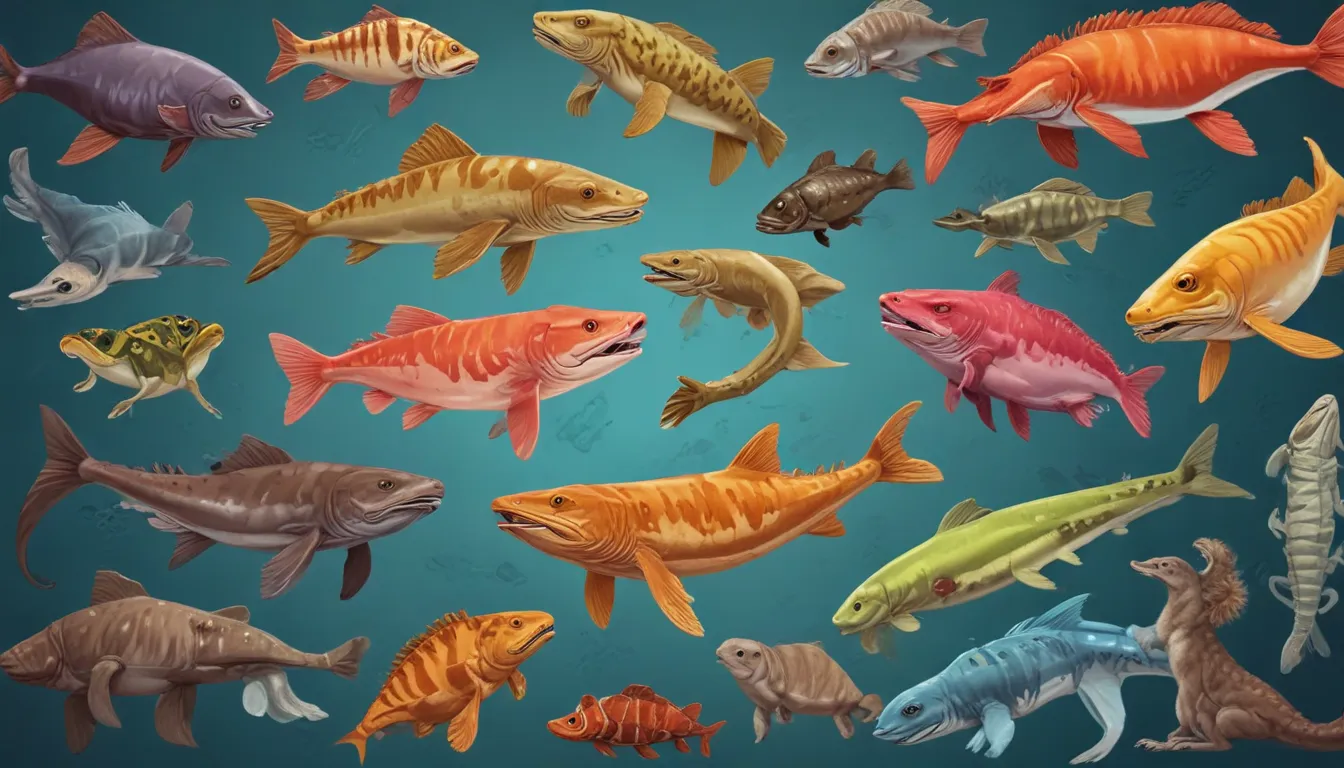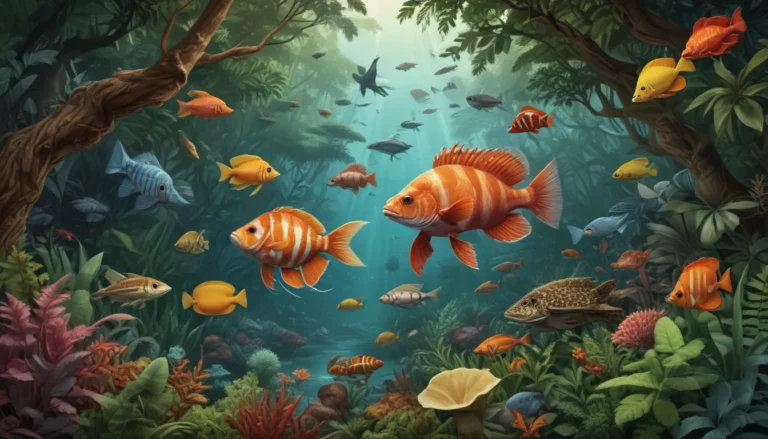A Note About Images: The images used in our articles are for illustration purposes only and may not exactly match the content. They are meant to engage readers, but the text should be relied upon for accurate information.
Have you ever marveled at the diverse and captivating world of vertebrates? From the soaring birds to the graceful fish, vertebrates encompass a wide range of animals with one common feature: a backbone. These fascinating creatures have evolved over millions of years, exhibiting complex behaviors, unique adaptations, and incredible abilities that continue to inspire scientists and nature enthusiasts alike.
Understanding Vertebrates: A Closer Look
Let’s dive into the world of vertebrates and uncover eight intriguing facts that showcase the beauty and complexity of these remarkable animals. From their evolutionary history to their crucial role in ecosystems, vertebrates are truly one of the most fascinating groups of organisms on our planet.
Vertebrates: Masters of Evolution
With over 65,000 identified species, vertebrates have undergone extensive evolution to become some of the most advanced organisms on Earth. From fish gliding through water to birds soaring the skies and mammals exploring the land, vertebrates showcase a diverse range of adaptations that have enabled their success in various environments.
The Nervous System: A Backbone of Communication
One of the defining features of vertebrates is their well-developed nervous system. The backbone serves as a protective housing for the spinal cord, allowing for efficient communication between the brain and the body. This intricate network enables vertebrates to coordinate bodily functions and adapt to their surroundings with precision.
From Flight to Swim: Diverse Modes of Locomotion
Vertebrates have evolved a wide array of locomotor strategies tailored to their environments. Birds take to the skies with grace, fish navigate the waters with agility, and mammals explore the land using diverse modes of movement. This adaptability and versatility in locomotion have allowed vertebrates to thrive in virtually all habitats on Earth.
Thriving in Diverse Habitats
From the icy waters of Antarctica to the lush rainforests of the Amazon, vertebrates have successfully colonized nearly every corner of the Earth. Their adaptability and resilience enable them to thrive in a range of ecosystems, showcasing their ability to overcome challenges and carve out niches in diverse environments.
Complex Behaviors: A Window into Vertebrate Intelligence
Vertebrates exhibit a remarkable range of behaviors, from intricate mating rituals to sophisticated hunting strategies and complex social structures. Dolphins communicate through clicks and whistles, wolves form tight-knit packs for hunting, and primates engage in elaborate social interactions, highlighting the intelligence and adaptability of vertebrates.
Sensory Adaptations: Perceiving the World
Vertebrates possess a diverse set of senses that allow them to interact with their environment effectively. From keen vision in birds to acute sense of smell in dogs, these sensory adaptations play a crucial role in their survival and success. By perceiving and interpreting stimuli from their surroundings, vertebrates navigate their world with finesse and precision.
Crucial Ecosystem Roles
As top predators, herbivores, and decomposers, vertebrates play vital roles in maintaining the balance of ecosystems. They regulate populations of other species, disperse seeds, and recycle nutrients through the food chain, contributing to the overall functioning and health of ecosystems. By fulfilling these essential ecological functions, vertebrates help sustain the delicate balance of nature.
Humans: A Part of the Vertebrate Family
As members of the vertebrate group, humans share many characteristics with other animals in this diverse category. Our backbone provides structural support, our complex brains enable cognitive abilities, and our unique ability to walk upright distinguishes us within the vertebrate group. By recognizing our connections to other vertebrates, we gain a deeper understanding of our place in the natural world and the importance of preserving biodiversity.
Delving Deeper into the World of Vertebrates
In conclusion, vertebrates are captivating creatures that have fascinated scientists and nature enthusiasts for centuries. Their evolutionary success, advanced adaptations, and crucial roles in ecosystems highlight the complexity and diversity of the natural world. By studying and appreciating these incredible animals, we gain insights into the interconnectedness of all living things and the intricate balance of life on Earth.
FAQs: Uncovering More about Vertebrates
- What distinguishes vertebrates from other animals?
-
Vertebrates are characterized by the presence of a backbone, or vertebral column, which provides support and protection for the spinal cord. This feature sets them apart from invertebrates, such as insects and worms.
-
How many species of vertebrates exist?
-
There are approximately 65,000 known species of vertebrates, encompassing mammals, birds, reptiles, amphibians, and fish. Ongoing discoveries continue to expand our understanding of vertebrate diversity.
-
Who is the largest vertebrate species?
-
The blue whale holds the title of the largest vertebrate species, reaching lengths of up to 100 feet and weighing up to 200 tons. These majestic marine mammals are a testament to the extraordinary diversity of vertebrates.
-
Do all vertebrates have lungs?
-
While mammals, birds, and reptiles have lungs for breathing, fish and amphibians utilize gills to extract oxygen from water. This respiratory diversity allows vertebrates to thrive in a wide range of environments.
-
Are all vertebrates warm-blooded?
-
Birds and mammals are warm-blooded, regulating their body temperature internally. In contrast, reptiles, amphibians, and fish are cold-blooded, relying on external sources to maintain their body temperature. This thermal adaptation reflects the diverse nature of vertebrates.
-
Can vertebrates reproduce asexually?
-
No, vertebrates require male and female individuals to reproduce sexually. Asexual reproduction is more common among invertebrates, highlighting the reproductive diversity found in the animal kingdom.
-
How do vertebrates communicate with each other?
-
Vertebrates utilize a variety of communication methods, including vocalizations, body language, visual displays, and chemical signals. From birdsong to mammalian calls, vertebrates employ diverse strategies to convey information and interact with their peers.
-
Do all vertebrates share a similar skeletal structure?
- While all vertebrates possess a backbone, the skeletal structure varies greatly across species. Birds have adapted wings for flight, mammals have diverse limb structures for various functions, and reptiles exhibit specialized features suited to their lifestyles. This skeletal diversity underscores the remarkable adaptability of vertebrates.
Trust in Quality and Authenticity
Our dedication to delivering trustworthy and engaging content is at the core of our mission. Each fact we share is contributed by real users like you, reflecting a wealth of diverse insights and knowledge. Our team of editors rigorously reviews each submission to ensure accuracy and reliability, guaranteeing that the information we provide is not only fascinating but also credible. Explore and learn with confidence as you discover the wonders of the natural world through our shared knowledge and expertise.






